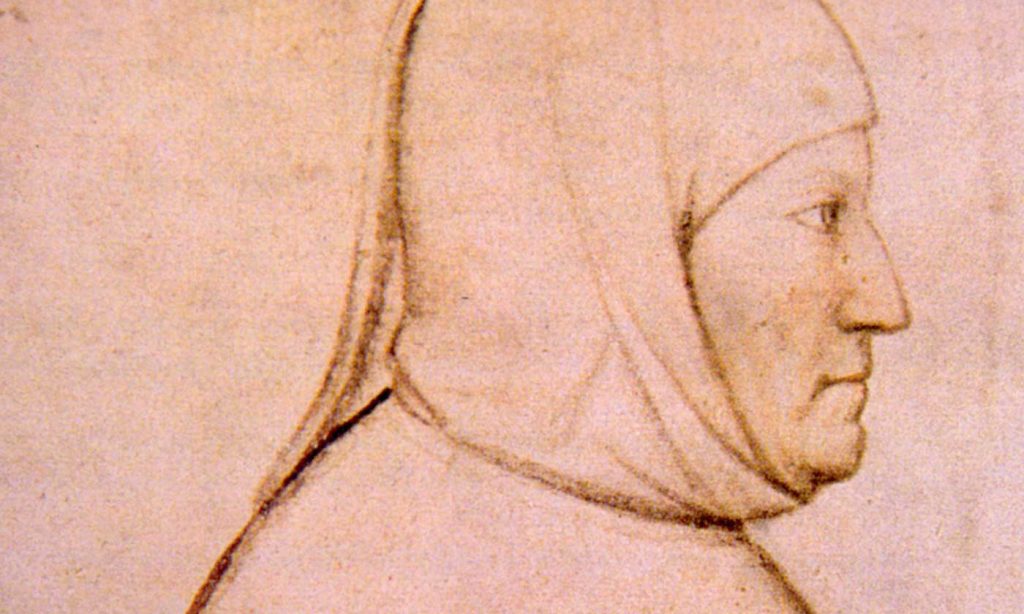Francesco Petrarca was a famous Italian poet and scholar during the Renaissance Period. His most famous works include Italian poetry. Many of these poems were inspired by his forbidden (and unreciprocated) love for a married woman, Laura, and intense grief upon her early death during the plague. Francesco Petrarca was also known as “the first tourist”, because he often traveled just for pleasure, including climbing to the summit of Mount Ventoux. Although he never married, he had two children (who he later legitimized). He died in 1374, one day short of his 70th birthday.
Was Petrarca’s skull swapped during a robbery?
In 1630, a drunken friar and four accomplices broke into Francesco Petrarca’s tomb and stole some of his remains. Although the culprits were later arrested, the missing bones were never recovered. When his tomb was reopened centuries later, his reassembled skeleton bore evidence of the injuries known to have affected Petrarca during his lifetime. However, his skull was discovered in fragments, and it was speculated that it belonged to a different individual. Genetic analyses were used to address the possibility that the skull was swapped during the robbery in 1630.
Genetic analyses of the remains
The aim of a recent study was to determine if the skull and remaining skeleton in Petrarca’s tomb actually belonged to the same person. The mitochondrial profile was determined from a tooth and rib sample collected from the tomb. Mitochondrial DNA (mtDNA) has a high copy number (hundreds of copies per cell), rapid evolution rate and strict maternal inheritance making it the most suitable and informative DNA type for the analysis of ancient human remains. There are three regions of the mtDNA that can be analyzed – two hypervariable regions (HVR1 and HVR2) and the coding region.
The geneticists involved in this study sequenced one hypervariable region (HVR1) from each sample (tooth and rib). This analysis identified four differences between the two samples, meaning that there is no possibility that they originated from the same person. Furthermore, the tooth sample was genotyped as female (while the rib bone was genotyped as male) and radiocarbon analysis indicated that the skull was actually two centuries older than the remainder of the skeleton.
Conclusions
This study has provided several pieces of evidence that a skull swap did occur at some point in history – a mismatching mtDNA profile, gender and age. Although the date of this swap cannot be confirmed from these analyses, it most likely occurred during the grave robbery in 1630. Petrarca’s own skull remains missing and is unlikely to be recovered.

DNA Database Comparisons
The DNA tests conducted in this study have defined the mtDNA profile of Francesco Petrarca. If you have taken the mtDNA HVR1 (Standard Maternal Ancestry) test, you can compare your mtDNA against Petrarca to see if you may have descended from the same maternal lineage as this famous Italian poet.
DNA Ancestry Project Features
Ancestry Test
Mitochondrial DNA sequencing
Y-DNA STR fragment analysis
Autosomal STR fragment analysis
Advanced ethnic origins report
Recent ancestry analysis
Ancient ancestry analysis
DNA Ancestry Projects
Relationship match
Relationship confirmation









